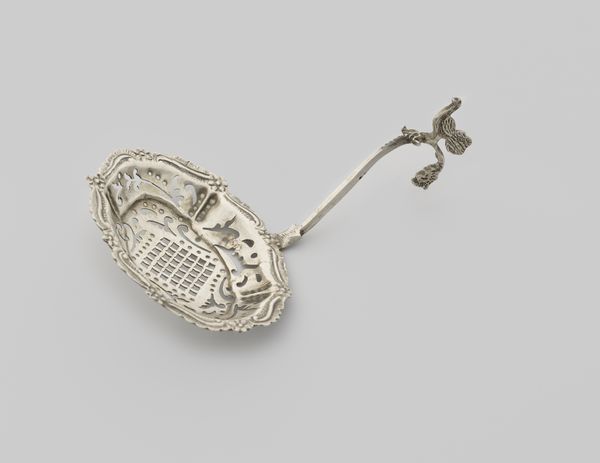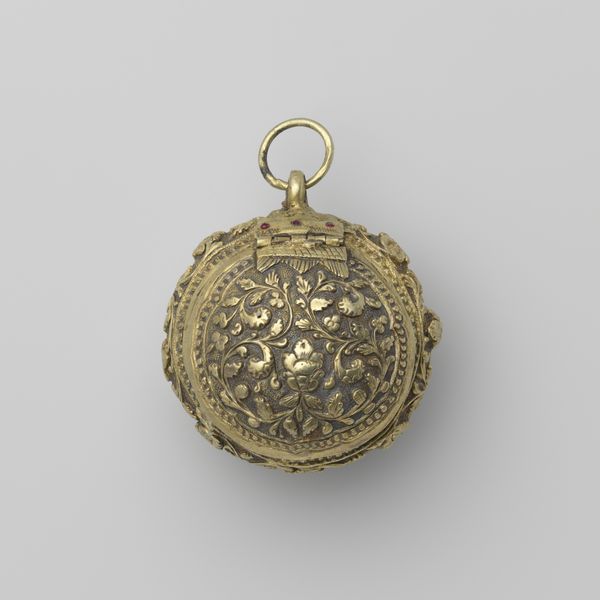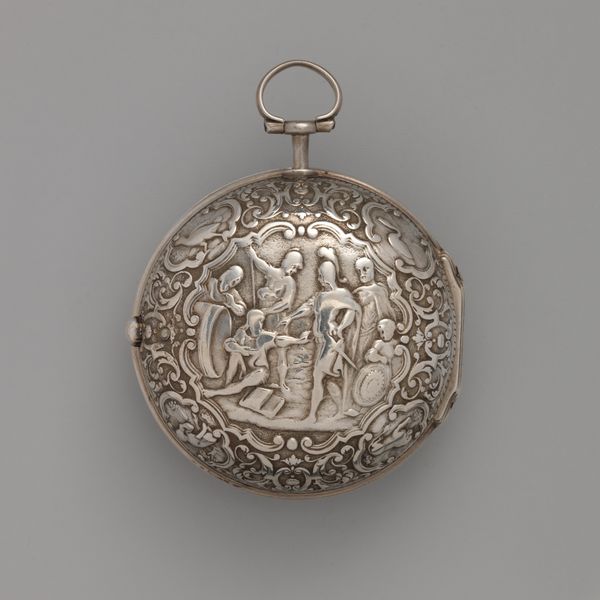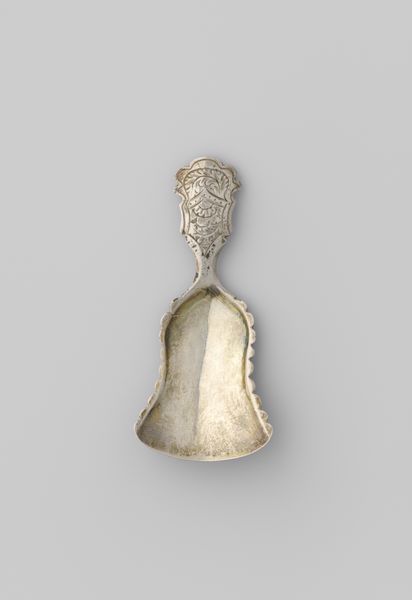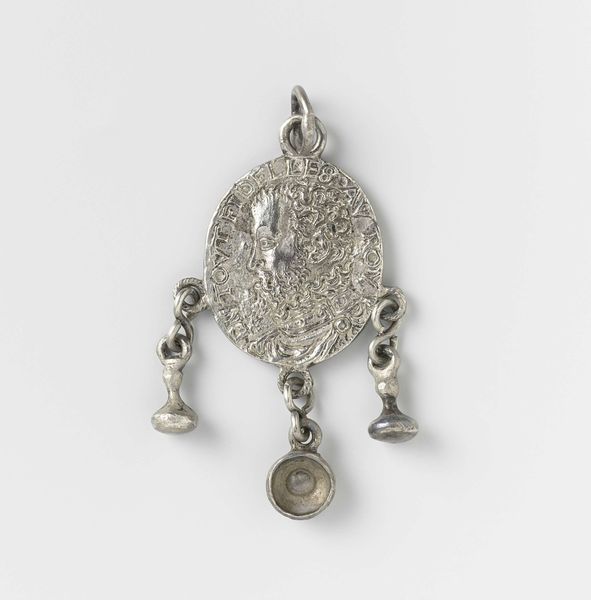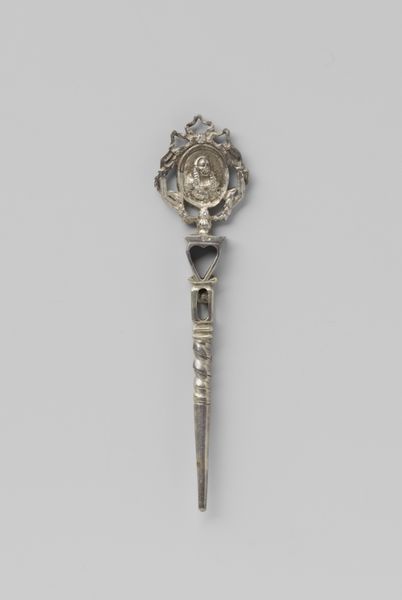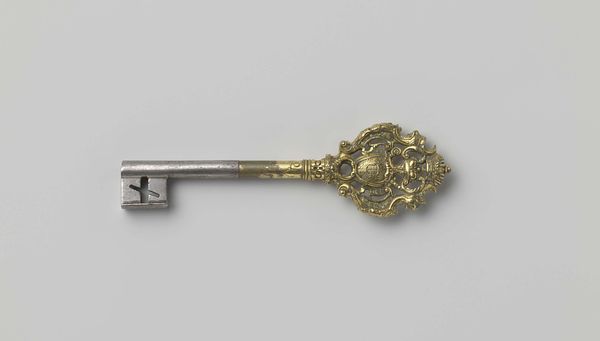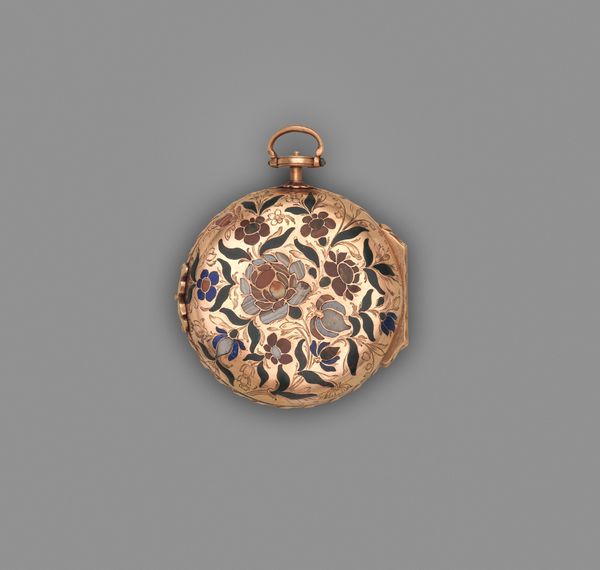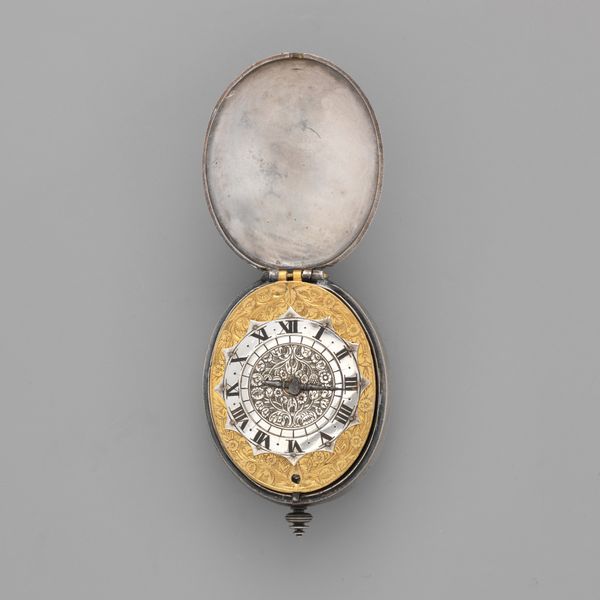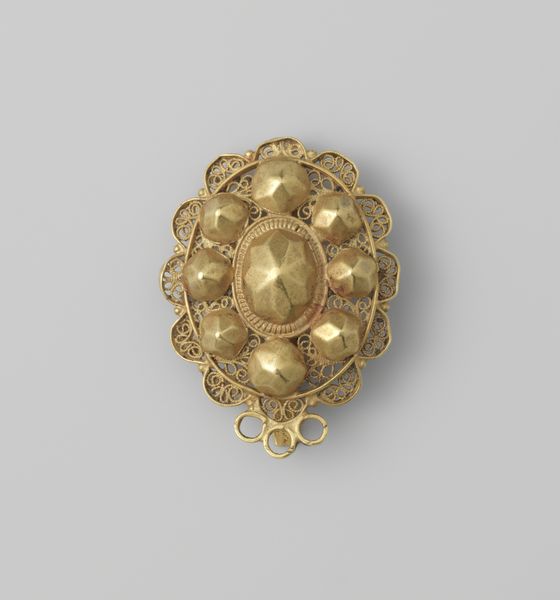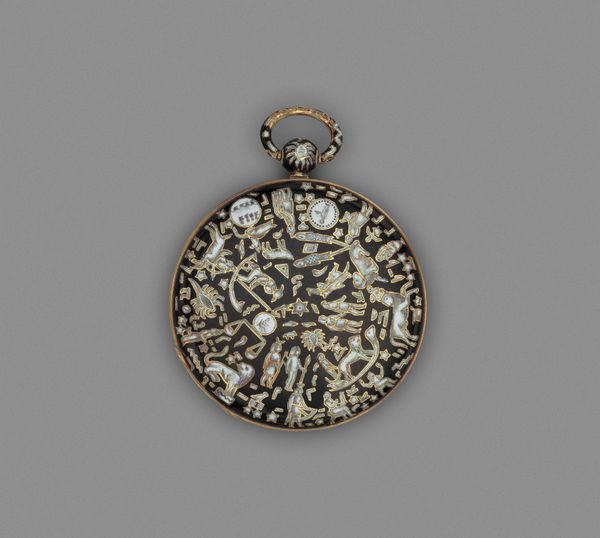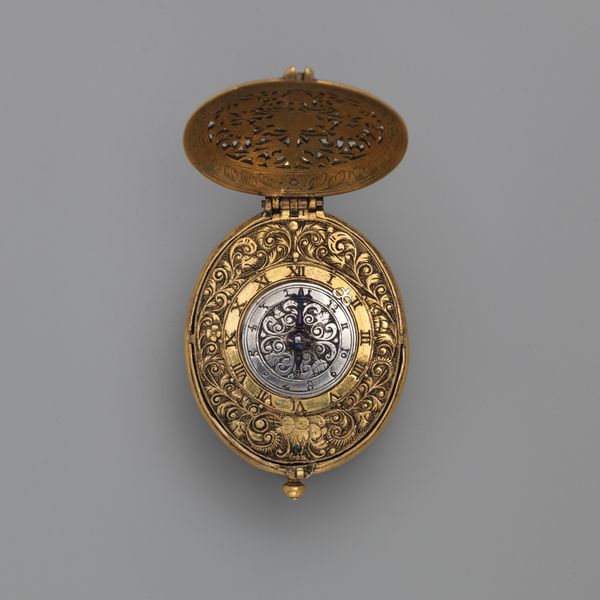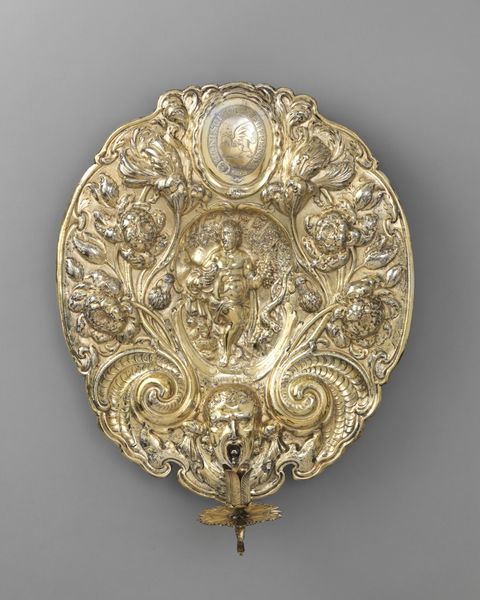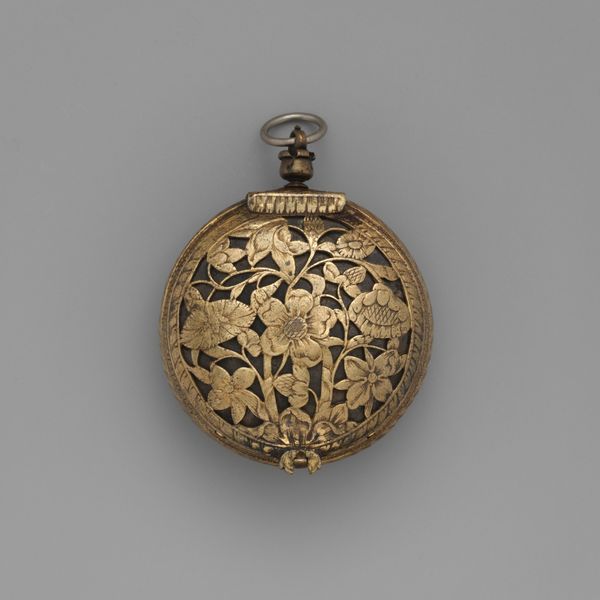
Dimensions: length 13.7 cm, width 8.7 cm, depth 3.5 cm, weight 26.0 gr
Copyright: Rijks Museum: Open Domain
This is a silver strooilepel, or sifting spoon, by Bartholomeus Smits. It’s a delicate object, made for a specific purpose, and gives us a glimpse into the rituals of dining and social life in its time. The strooilepel was used to sprinkle sugar or spices over food. Its ornate design, with intricate latticework and floral motifs, speaks to the value placed on refinement and display in Dutch society. The spoon would have been part of a set of tableware, used by wealthy families to impress guests. The Dutch Golden Age was a time of economic prosperity, fuelled by international trade. This wealth translated into a flourishing of the arts, including the decorative arts. Silverware became a status symbol. To understand this object better, we might look at inventories of wealthy households, or paintings of the period that depict dining scenes. These resources can help us understand the social meanings attached to objects like this strooilepel.
Comments
No comments
Be the first to comment and join the conversation on the ultimate creative platform.
